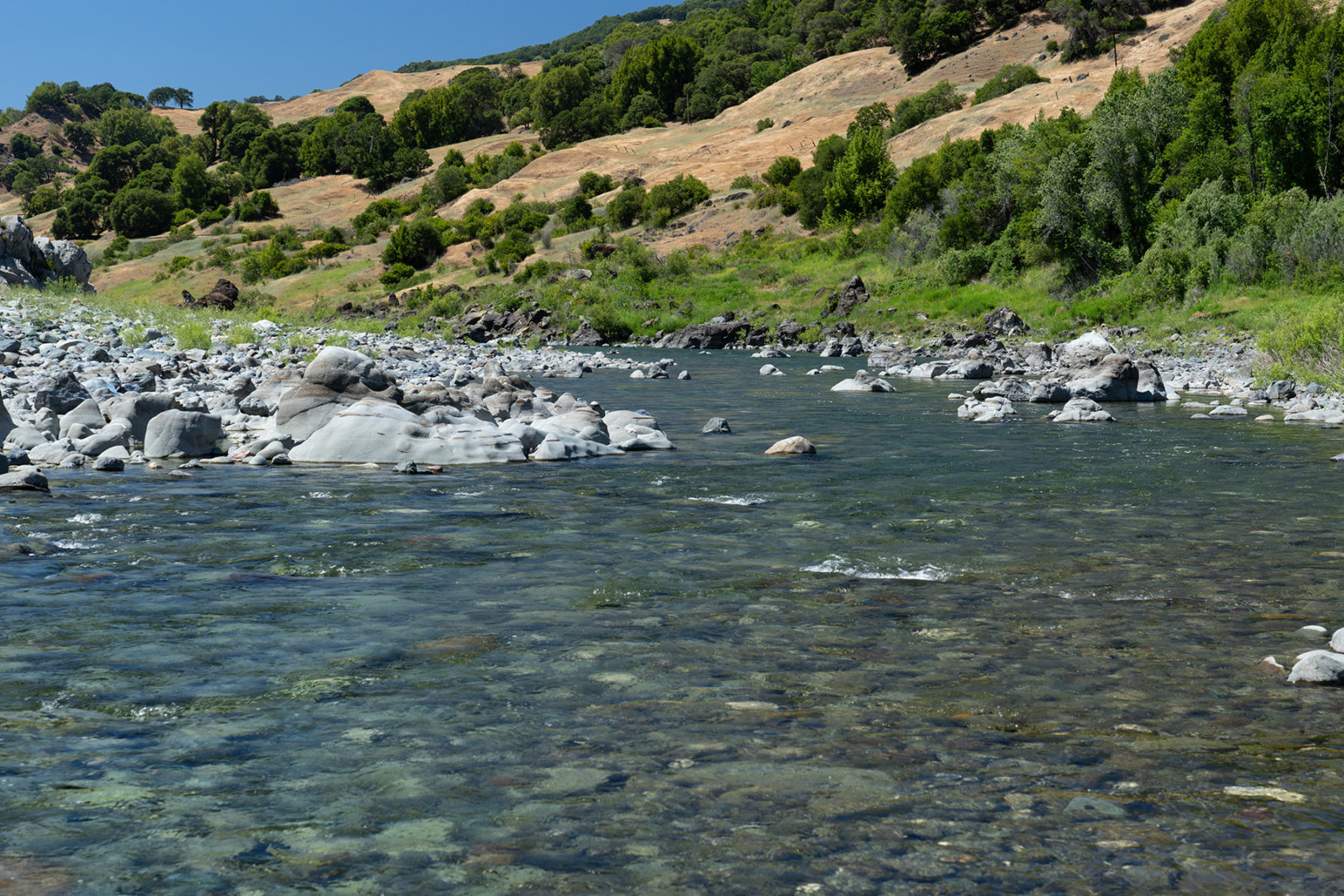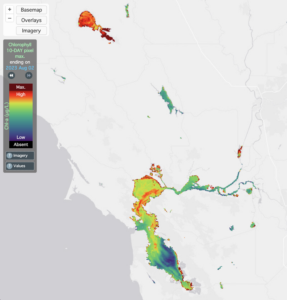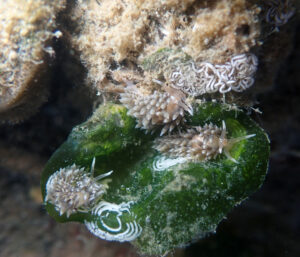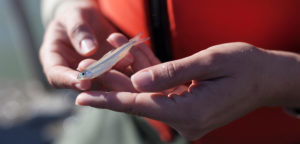The Eel River in northwestern California—along with its numerous forks and tributaries—forms the third largest watershed entirely within the state. The river’s main stem and three main forks flow a combined 398 miles from sources in the coast ranges of Mendocino and Lake counties, north to a delta where it meets the Pacific Ocean 15 miles south of Eureka. Along the way, it passes through some of the most rugged, wild, and biologically rich areas of northern California, including large portions of redwood country. The Eel was designated as a “Wild and Scenic River” in 1981. Among the most remote and wildest sections of the river is the 82-mile stretch of the main stem from Potter Valley in eastern Mendocino County to Alderpoint in southeastern Humboldt County. Yet despite its ecological richness, very little of the land on either side of the river here has been protected, as 90 percent of this land remains in private hands, and very little of it is currently accessible to the public.
This could change soon, however, if two ambitious initiatives to protect this wild country bisected by the Eel and make it accessible to the public come to fruition. And both those initiatives received a boost from the new state budget just passed by the California Legislature (and, as of this writing, still awaiting Governor Newsom’s signature).
The first project is the “Eel River Emerald Necklace” undertaken by the Southern California based nonprofit conservation organization The Wildlands Conservancy (TWC). The organization’s goal is to establish a system of preserves along the main stem of the river between Dos Rios (the confluence of the middle fork and main stem of the Eel) and the Pacific. These preserves will focus on both habitat restoration and promoting passive recreation and outdoor education while helping to protect over 75 mammal species and over 400 bird species found in the watershed, not to mention threatened runs of coho and Chinook salmon and steelhead trout.
The group began its campaign on this wild stretch of the Eel with the purchase of 5,800 acre Spyrock Ranch, with five miles of river frontage, in 2005. Then, in 2008, the group purchased the Connick Ranch along the southern edge of the Eel River delta, creating the 1,100-acre Eel River Estuary Preserve at the river’s mouth. Then in 2019 it purchased 3,000-acre White Ranch (renamed the Emerald Waters Reserve), with three miles of river frontage. All three preserves were purchased with private donations.
But now comes the largest endeavor to date: the proposed purchase of the huge 26,600-acre Lone Pine Ranch, with over 18 miles of river front, extensive grasslands and oak woodlands, large Douglas fir forests, hundreds of acres of riparian habitat, 3,500 feet of elevation gain from the river to the summit of Horse Ranch Peak, and resident Roosevelt elk herds. In 2019 The Wildlands Conservancy entered into an agreement with the Dean Witter family, owners of the ranch, to purchase the property for $25 million. Now with the October 2021 deadline for completing the purchase fast approaching, the state legislature has just approved a $10 million grant through the Wildlife Conservation Board to support purchase of the ranch. Combined with previously raised and committed funds, this grant leaves TWC just $3 million short of the amount needed to complete the purchase. The organization has already started fundraising to obtain these remaining funds and is hoping to find new supporters to complete this historic purchase. “This is a rare opportunity to preserve one of the most breathtaking landscapes in the country,” says TWC’s co-founder and president, David Myers. “We hope our supporters and the public will consider the Eel River Emerald Necklace as a legacy project to protect a national park quality landscape and ensure that it is accessible to the public.”
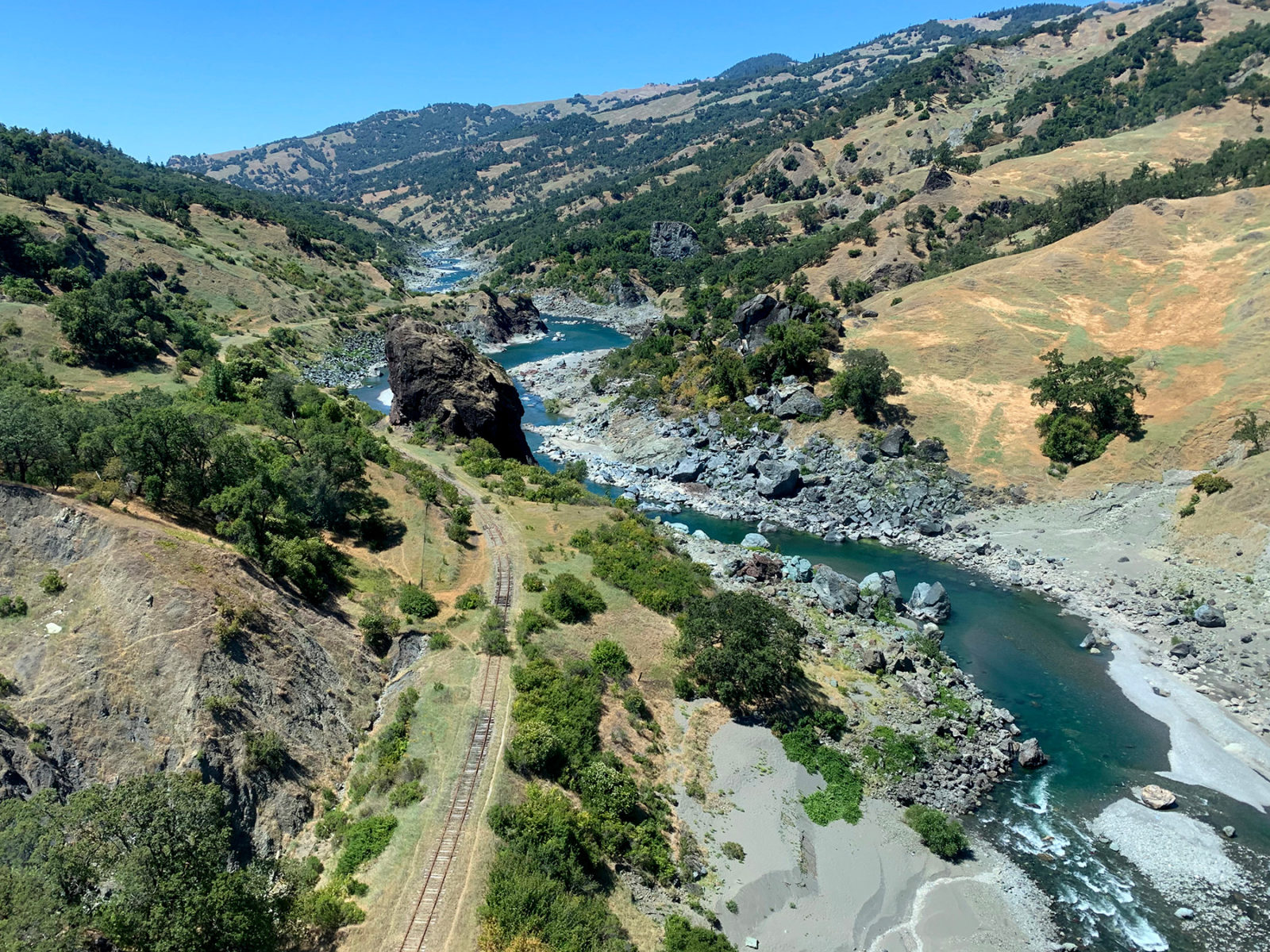
The Conservancy, which owns and manages 21 preserves comprising the largest privately-owned preserve system in the state, is committed to providing free public access and outdoor education on all its preserves. (Two of TWC’s preserves are in the Bay Area: Jenner Headlands and Estero Americano, both along the Sonoma County coast. The first is currently open to the public; the second is being prepared for public access in the near future.) Its vision for Lone Pine Ranch includes providing free access to sites for camping along the river for rafters and kayakers, who now have very limited access to overnight sites, along with access for passive recreation and scientific research throughout the ranch. In addition, the group plans to renovate the Witter family ranch buildings to become a base for field research and environmental education.
The value of protecting this huge property becomes even clearer when combined with a second initiative that received a boost from the new state budget. The Great Redwood Trail is a 300+-mile trail corridor from Larkspur to Arcata that follows the tracks of the North Coast Railroad Authority (NCRA), along the banks of the Russian River and then crossing over into the Eel River watershed, joining the main stem upstream of the Emerald Necklace properties. The NCRA ran trains along this route into the 1990s before going defunct. Ownership of the railroad’s right-of-way along the river canyon will soon be transferred from the railroad to the state-created Great Redwood Trail Authority, which will be tasked with the monumental job of converting the deteriorating rail bed and tracks into a dirt (and in some places, paved) trail for use by hikers, cyclists, and equestrians. Think of it as a kind of John Muir Trail that is mostly level and runs through vineyards, a wild river canyon, and old growth redwood forests.
Caryl Hart, a member of the California Coastal Commission, is Sonoma County’s representative on the NCRA board. She says, “The vision of the Great Redwood Trail is simple: to transform an obsolete and dysfunctional railroad right-of-way into the longest rails-to-trails route in the country, creating an inspirational and transformational economic engine and huge recreational draw not just for the north coast, but for all of California and beyond.”
The latest state budget allocates $16.5 million for closing out the books on the railroad and undertaking trail planning, which will include reviewing and updating some 1,900 property easements along the route. Of course, making the needed repairs and upgrades to the trail bed in order to open the whole route—with its unmaintained bridges and tunnels and occasional landslides—will require a lot more time and money. But different sections can and will come on line in the not- too-distant future. And when they do, the facilities planned for Lone Pine Ranch will no doubt make it a popular stop along this ambitious and scenic backcountry route connecting San Francisco Bay with Humboldt Bay.

